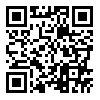BibTeX | RIS | EndNote | Medlars | ProCite | Reference Manager | RefWorks
Send citation to:
URL: http://frooyesh.ir/article-1-6164-en.html
2- Assistant Professor, Department of Educational Sciences, I.C., Islamic Azad University, Islamshahr Branch, Islamshahr, Iran. ,
3- Associate Professor, Department of Psychology, I.C., Islamic Azad University, Ardabil Branch, Ardabil, Iran.
The present study aimed to investigate the mediating role of resilience in the relationship between cognitive flexibility and cognitive ergonomics with burnout among employees of the Persian Gulf petrochemical industries. The present descriptive-correlational study was of the type of structural equation modeling. The statistical population was 1600 employees of the Persian Gulf Petrochemical Industries in 2024, of which 250 were selected by a stratified random sampling method. Data were collected by Dennis & Vander Wal's Cognitive Flexibility Questionnaire (CFI, 2010), Shafiee's Cognitive Ergonomics (CEQ, 2022), Maslash & Jackson's Maslach Burnout Inventory (MBI, 1981), and Connor and Davidson's Conner-Davidson Resilience Scale (CD-RISC, 2003). The data obtained were analyzed through correlation tests and structural equation modeling. The results showed that cognitive flexibility, cognitive ergonomics, and resilience have a direct and significant effect on burnout in employees (P<0.01). Also, cognitive flexibility and cognitive ergonomics have an indirect and significant effect on burnout through the mediation of resilience in employees (P<0.01). Also, the modified model had a good fit.. (P<0.01). Therefore, by implementing programs and interventions to increase cognitive flexibility and cognitive ergonomics as well as resilience, burnout in employees can be reduced.
Received: 2025/04/13 | Accepted: 2025/04/26 | ePublished: 2025/05/31
| Rights and permissions | |
 |
This work is licensed under a Creative Commons Attribution-NonCommercial 4.0 International License. |





